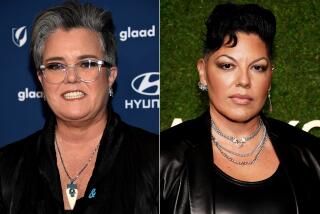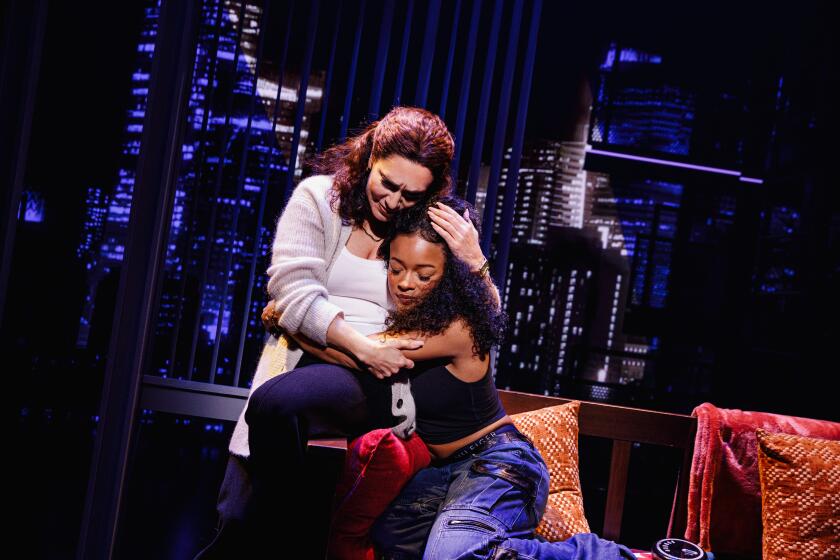Dusting Off Rare Keyboard Works
The standard repertory for piano is large. But it is just the tip of an ivory iceberg of interesting music that has been written for keyboard during the past 400 years.
There are almost limitless discoveries to be made, and it turns out that we miss a lot.
Below is a look at little-known, and in some cases downright obscure, work by composers (some of whom are also downright obscure) that has fallen below the standard repertory radar.
*** 1/2
ANTOINE FORQUERAY
Suites for Harpsichord
Christophe Rousset,
harpsichord
Decca
Forqueray’s life and music are enigmas. The Baroque composer, who was born in 1672 and died in 1745, wrote but five suites. Together, they make up about 2 1/2 hours of music and were published posthumously by his son in two versions, one for viola da gamba and harpsichord, and the other transcribed for harpsichord alone.
Who did the transcribing, and even who did the composing are not entirely clear (his son and second wife have both been proposed as candidates).
Here’s what we do know: Forqueray was an unpleasant character, a wife-beater who had his son imprisoned for gambling and theft. And we know this: The suites in their harpsichord version are flights of marvelous fancy worthy of standing next to those by Rameau.
All the movements to the five suites are named after contemporaries (such as Couperin and Rameau), places, instruments or mythological figures. There is progression through the works from simplicity to extravagant bravura. “Jupiter,” the last movement of Suite No. 5, is harpsichord music at its most dazzling. Forqueray had gifts for melody, harmony and sound effects.
The harpsichord is not always a colorful instrument, but here it is an auditory rainbow, especially when played with Rousset’s joie de vivre.
Mark Swed
** 1/2
ANATOLY ALEXANDROV: Piano Music
Hamish Milne, piano
Hyperion
The obscurity of composer Anatoly Alexandrov is a penalty of his living most of his life in the Soviet Union without being either a persecuted musical innovator or an honored political hack.
His work embodies no overtly tortured persona, but neither is it devoid of a strong personal voice. Imagine Rachmaninoff purged of his romanticism, pursuing formal designs. The results are interesting and substantial, if not ultimately compelling and top-drawer. The disc spans the Opus One preludes, published in 1916, and two (of seven planned) Visions of 1979. (He died in 1982.) Hamish Milne is a strong advocate for this music, which helps fill out the history of music in our time. Chris Pasles
*** 1/2
LEOPOLD GODOWSKY
Sonata in E Minor; Passacaglia
Marc-Andre Hamelin, piano
Hyperion
Godowsky was celebrated in his lifetime as a hyper-virtuoso pianist. As a composer, he is famed mostly for 53 transformations of Chopin’s Etudes, but his massive, five-movement sonata, occupying 47 minutes in Hamelin’s exciting performance, is worth a listen. It’s a tasteful, highly attractive work in an eclectic style owing something to Brahms, Granados, Richard Strauss, Franck and Rachmaninoff. Despite its length, it is not so much monumental as lighthearted, transparent in texture if demanding technically. It owes more to the salon than to the temple. The Passacaglia--described as “44 variations, cadenza and fugue on the opening of Schubert’s ‘Unfinished’ Symphony”--is relentlessly clever, occasionally witty, often beautiful. For the pianist, like Hamelin, with technique to burn, it is an 18-minute showpiece. Daniel Cariaga
**
“Stephen Hough’s English Piano Album”
Stephen Hough, piano
Hyperion
Following up his “New Piano Album” with a more specific focus, Hough turns in a collection of mostly pleasant, occasionally challenging 20th century English music, assembled from 1997-vintage leftovers from the aforementioned album and additional recordings from 2001. The disc is bookended by Alan Rawsthorne’s now-rampaging, now-coy or whimsical Bagatelles and Kenneth Leighton’s rugged, brilliantly percussive Six Studies, which surround a sequence of often gentle, at times sentimental musings of fluctuating interest. Only one major composer--Elgar, with “In Smyrna”--is represented. The most immediately appealing music is Hough’s own pair of “Valse Enigmatiques,” the first of which has a memorable motif that would have been at home in Stephen Sondheim’s “A Little Night Music.”
Richard S. Ginell
***
“The World of
Ruth Crawford Seeger”
Jenny Lin, piano;
Timothy Jones, narrator
BIS
***
RUTH CRAWFORD SEEGER
Nine Preludes
JOHANNA BEYER
“Dissonant Counterpoint”
Sarah Cahill, piano
New Albion
Seeger would undoubtedly have become a major American composer had she written more. She died relatively young at 52 (in 1953) and was busy as wife, mother (Pete was a stepson) and folk-music collector. Still, she left us some gems, like the Nine Preludes, mystically bewitching pieces in the modern dissonant style of the 1920s. Jenny Lin’s disc provides perspective, featuring all of Seeger’s piano music, much of it juvenilia. Among the works is a fascinating piano score she wrote in 1925 to accompany a recitation of “The Adventures of Tom Thumb,” which foreshadows her growing interest in folk music. The performances are solid and satisfying.
Cahill, a more characterful and probing pianist, sticks just with the preludes and “Piano Study in Mixed Accents,” a galloping one-minute mini-masterpiece. But she also provides a survey of Beyer’s piano music. A German American composer and musicologist in Henry Cowell’s circle, Beyer seems to have played a few of these piano works in concerts in New York. But none of her music was published during her lifetime, and she remains a little-known figure. More biting than Seeger’s Preludes, her “Dissonant Counterpoint” is a set of angular and powerful pieces with a strong voice and the solid urban feel of Depression-era New York. M.S.
** 1/2
CHRISTOPHE GRAUPNER
Partita in A Minor; Partita in C;
Partita in A
Genevieve Soly, harpsichord
Analekta
Graupner (1683-1760) was a contemporary of Bach and a lifelong friend of Handel and Telemann.
The composer, according to Soly’s informative and erudite notes, was “prolific and tireless,” and completed more than 2,000 instrumental compositions.
Here are three of the 40 partitas he wrote for harpsichord. Composed between 1718 and 1722, they are elegant examples of high Baroque style, resourceful keyboard techniques, and inventive and witty writing.
This is volume one; Soly promises more.
D.C.
***
REYNALDO HAHN
“Le Rossignol Eperdu”
Earl Wild,
piano
Ivory Classics
Like his far better-known songs, Reynaldo Hahn’s 53 “poems for piano” in “La Rossignol Eperdu” (The Bewildered Nightingale) are exquisite gems--clear, concise, sophisticated, lovely and modest.
Although they do not plumb the depths, storm the heights or explore advanced composition techniques, to dismiss them as salon pieces unnecessarily denigrates them. Each suggests a brief program or scene.
Easy favorites are “L’Ange Verrier” (The Glass Angel) and “Les Noces du Duc de Joyeuse” (The Marriage of the Duke de Joyeuse). But almost every one offers some particular pleasure. In this first complete recording, Wild, at 85, shows no loss of power, insight or ease of technique. C.P.
Albums are rated on a scale of one star (poor), two stars (fair), three stars (good) and four stars (excellent).
More to Read
The biggest entertainment stories
Get our big stories about Hollywood, film, television, music, arts, culture and more right in your inbox as soon as they publish.
You may occasionally receive promotional content from the Los Angeles Times.






